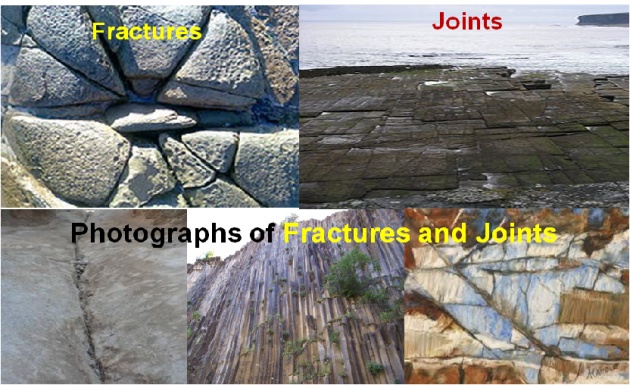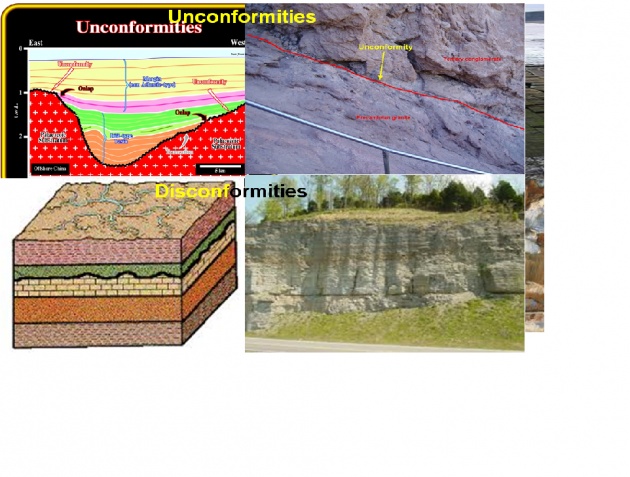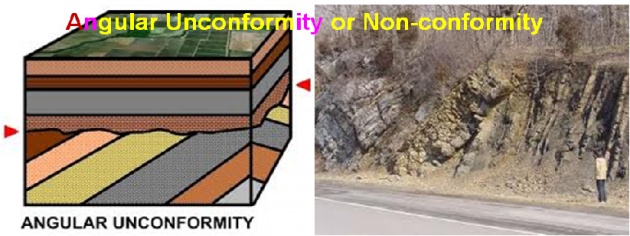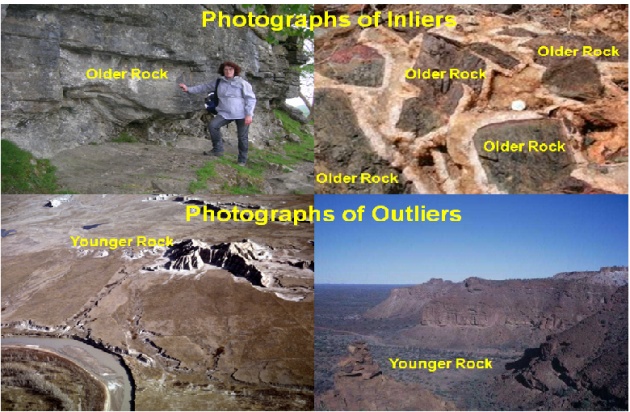Characteristics of Cleavage, Fracture and Joint: Foliated metamorphic rocks e.g. schist has Flow Cleavage which are important in shear strength for the foundations of dams, reservoirs, tunnels and bridges
Flow Cleavage: Metamorphic rocks show Flow Cleavage due to the reason of parallel arrangement of all the planar crystals, taken place during metamorphism
Secondary or Minor Structural Features:
These are usually caused in Sedimentary Rocks by Erosion
(1) UNCONFORMITY: It is defined as the missing of a layer or layers of strata of Sedimentary Rock usually due to the process of weathering; the un-interrupted (non-missing / continuous) structure of the strata of Sedimentary Rock is known as Conformable, such structure is known as Conformable Structure and such condition is known as Conformity Unconformable Structure and Unconformity

If the sequence of unconformity is parallel, it is known as Disconformity. If it is not parallel, then it is known as Angular Unconformity or Non-conformity
OVERLAP: It is a horizontal extension of the upper beds lying in a horizontal series (of rock strata) beyond the extremities of the lower beds usually caused (arranged) by the slanting edge of the river, lake or sea or by a fault line
(3) OUTCROP: It is an exposed stratum or body of a vein (mineralised zone) at the surface of the earth; also known as Cropout. It is also described as the portion of a rock formation or stratum that breaks the surface of the ground and exposed to the atmosphere. It has two types: Inlier and Outlier
(a) INLIER: It is defined as a circular or elliptical outcrop of an older rock surrounded by the outcrop of younger rock(s)

(b) OUTLIER: It is the reverse of Inlier – it is defined as an outcrop comprising a group of younger rocks separated from the main mass, surrounded by the outcrop of older rock(s)

äMajor Structural Features significantly affect the Civil Engineering Works especially the slope stability, structures / facilities on sloping ground, bridges and tunnels and water leakage in dams, reservoirs, tunnels and retaining structures




